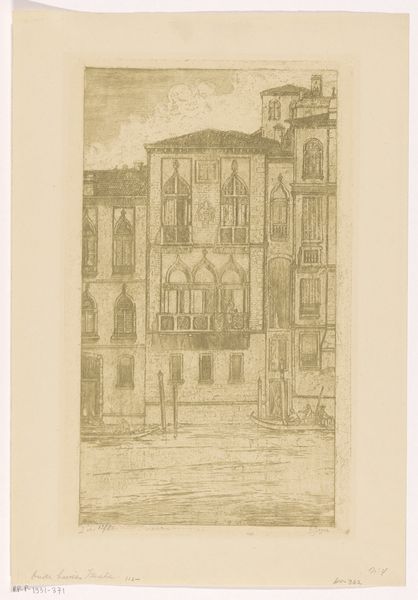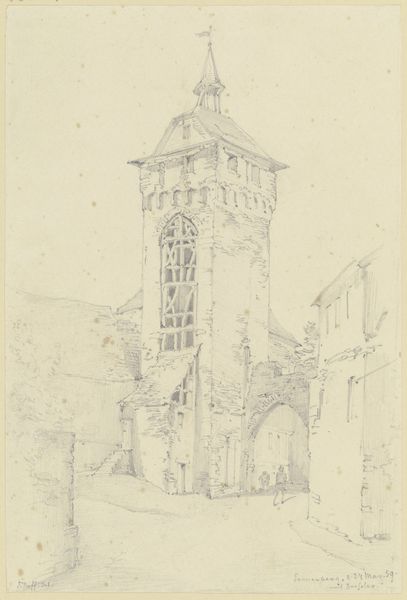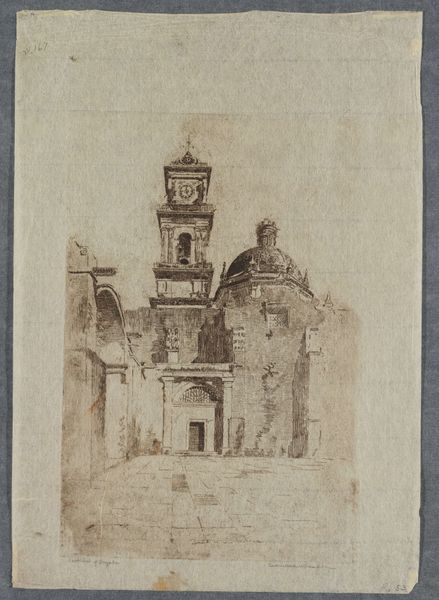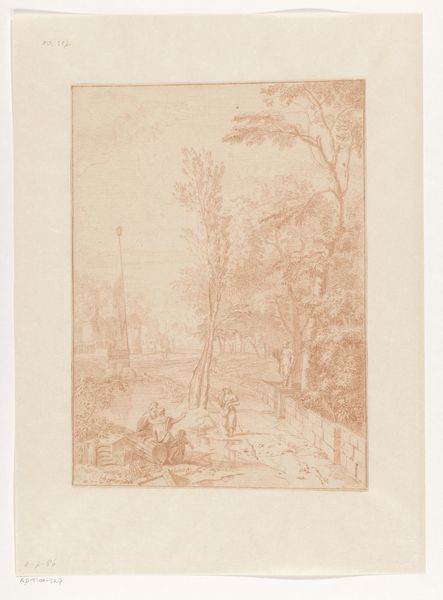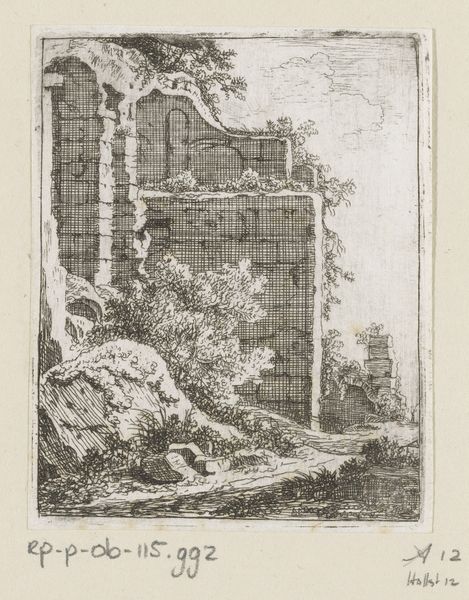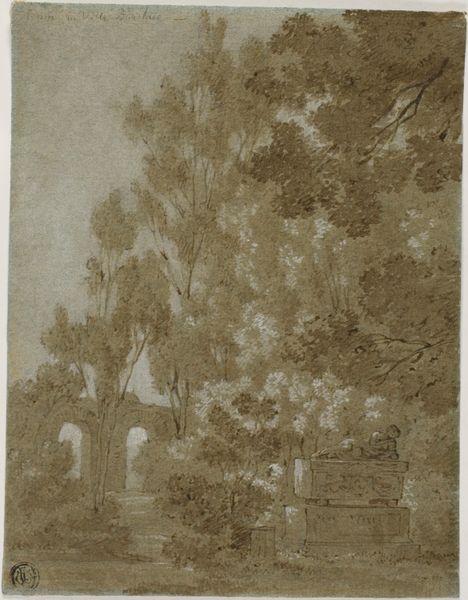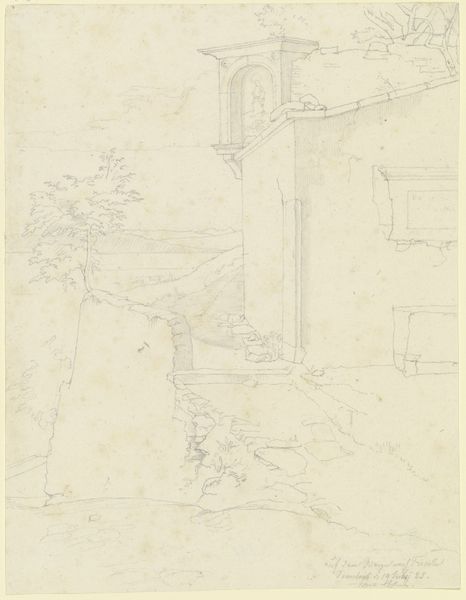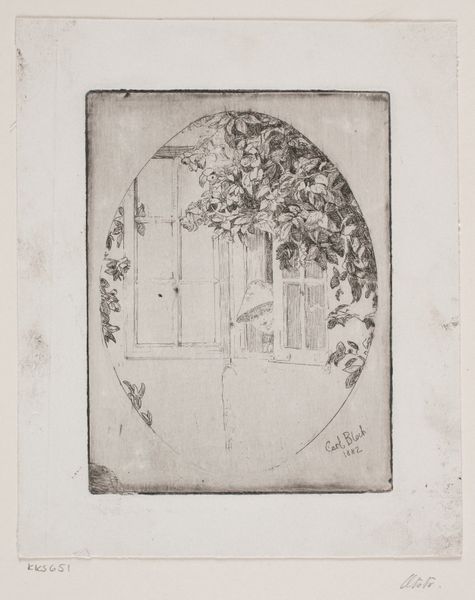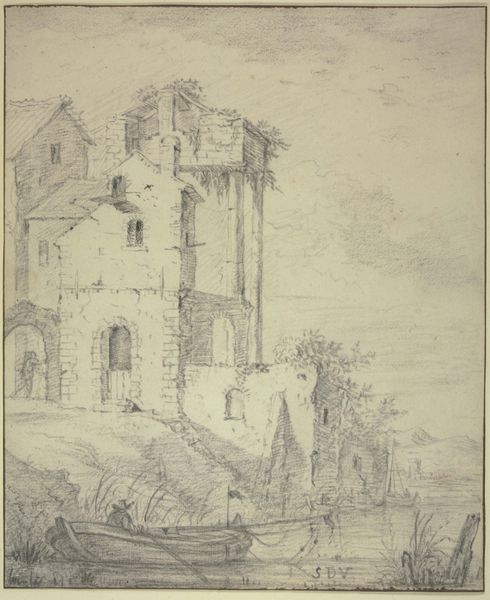
drawing, print, pencil, graphite
#
drawing
#
neoclacissism
# print
#
pencil sketch
#
landscape
#
etching
#
pencil
#
graphite
#
cityscape
Dimensions: Sheet: 10 3/16 × 7 11/16 in. (25.9 × 19.5 cm) Mount: 11 3/4 in. × 9 3/8 in. (29.9 × 23.8 cm)
Copyright: Public Domain
Curator: This is Richard Wilson’s "View of the Colosseum," created between 1751 and 1756, using pencil, graphite, and etching. It resides here at the Metropolitan Museum of Art. Editor: My immediate impression is one of delicate fragility. The sparse use of line and tone evokes a kind of hushed reverence for this iconic ruin. Curator: Absolutely. Wilson masterfully employs line to delineate form and structure. Note how the composition guides the eye—from the Colosseum on the right, across the middle ground with those faint figures, to the background architecture. Editor: For me, the fascination lies in what the process of creation reveals. This isn't just a view; it’s evidence of labor, of Wilson selecting and using these materials to interpret Rome’s historical narrative, even influencing future artists and travelers with this popularized imagery. Curator: Indeed, consider the implications of his decision to render the Colosseum, an emblem of classical grandeur, with such an unassuming medium as pencil on paper. It’s as if Wilson is emphasizing the act of observation itself, reducing the monumental to the intimately viewed. The light! The way light functions in this print creates these sort of dramatic scenes that speak volumes about what’s left out. Editor: What I also find engaging is the social aspect, who acquired these prints, why, and what did it signify in terms of their relationship to empire and culture? We can consider also what it means that it exists within an art world increasingly stratified by class, and who is really making this work—a complex workshop is necessary for any art such as this to succeed. Curator: These questions prompt us to understand Wilson's piece not merely as a representation, but as a complex statement of this very culture, with neoclassical aesthetics intersecting. The understated beauty challenges us to consider how it informs how we construct culture and aesthetics. Editor: Exactly, thinking through the physical actions and social network behind this art emphasizes how the means of making influence cultural value—art isn't separate from labor or production but shaped by these intrinsic forces. Curator: It leaves us contemplating the intersection of materiality, method, and the very act of observing a vestige of Rome, elegantly laid out with the simplest means. Editor: By unveiling these interconnected influences, one hopefully develops a more insightful and nuanced understanding of cultural representation as itself as a set of power-charged operations.
Comments
No comments
Be the first to comment and join the conversation on the ultimate creative platform.


